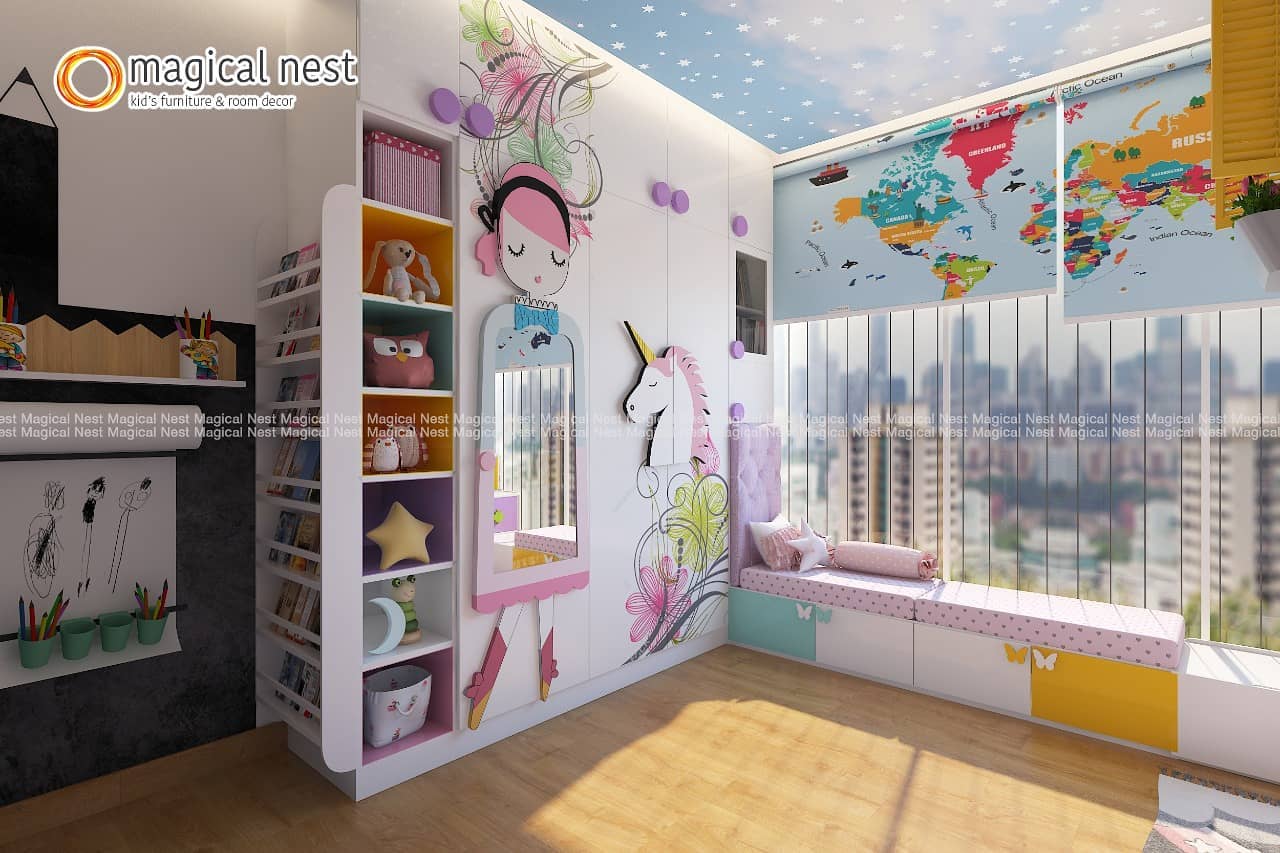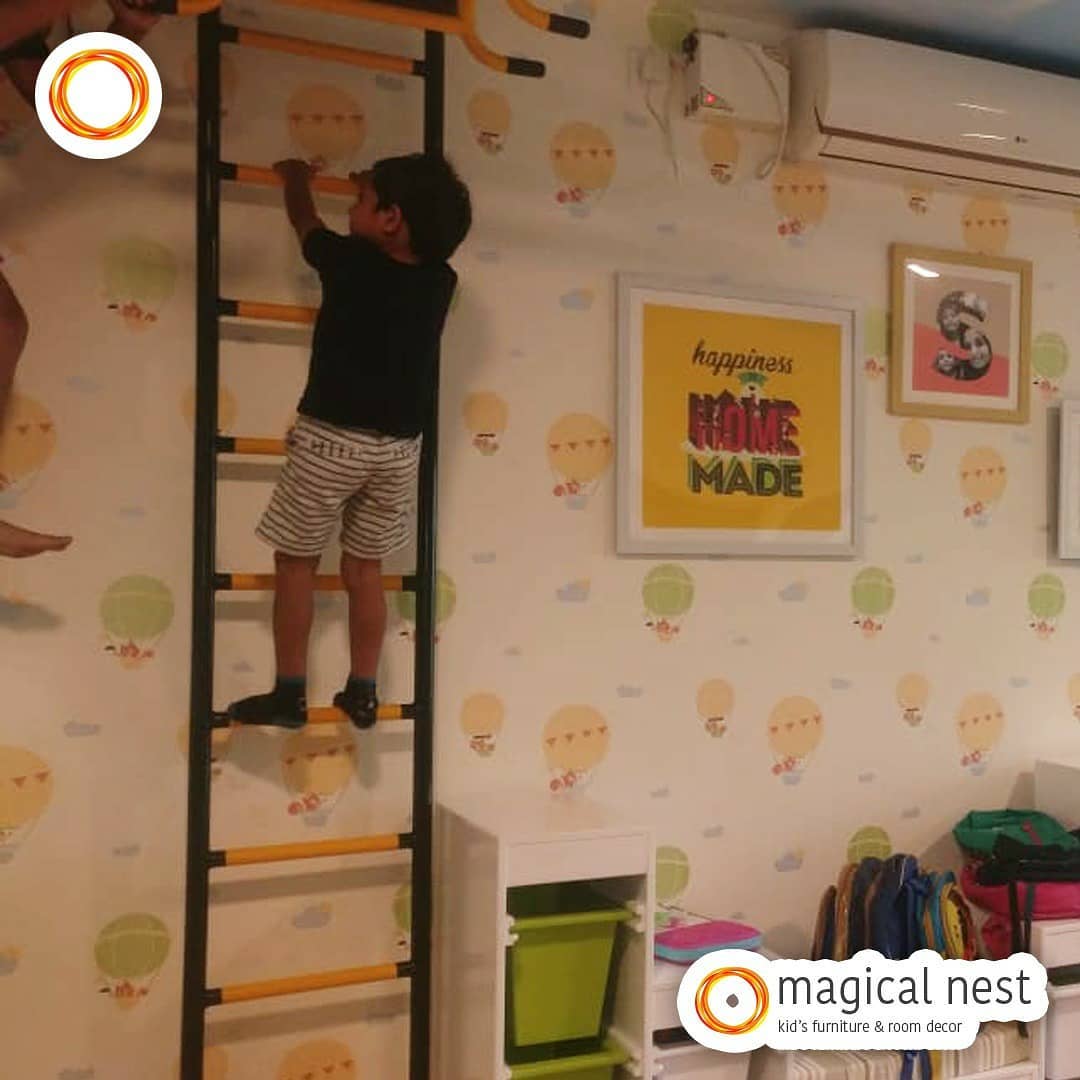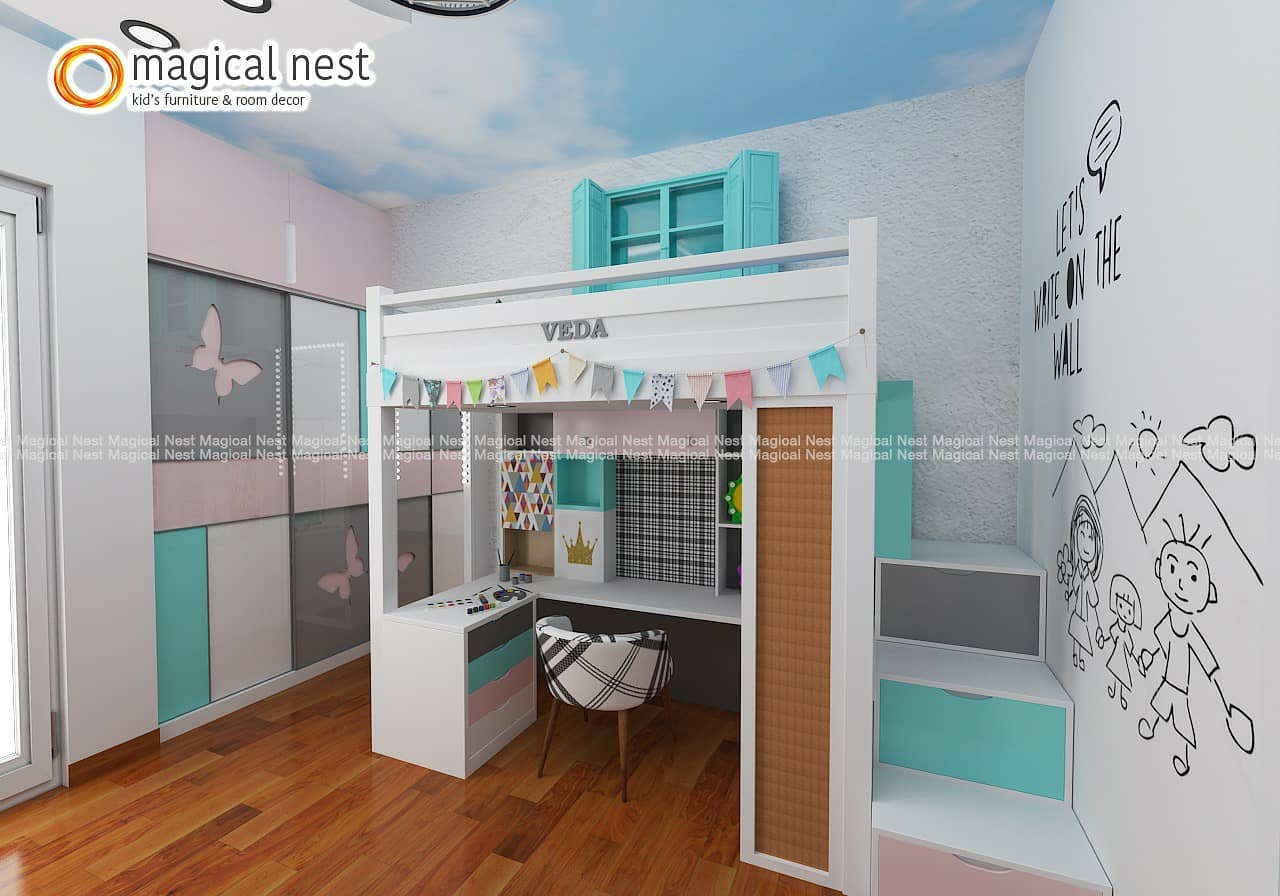
A wardrobe is a critical element in every kid’s room. As you know, a wardrobe houses your child’s clothes and other personal belongings, keep them protected from dust and damage and makes sure their stuff stays organized.
A Kid’s cupboards can be built into the walls as a fixed piece of children’s room furniture or be a free-standing piece. It can be sleek and minimal or classical in its look. It can have only shutters or a combination of shutters and drawers. The options are never-ending. So, if you’re working on your kid’s room design, here are some of the basic different types of kid’s wardrobes.
- Built-in wardrobes
When architects design an apartment, they typically make provisions for wardrobes. However, the fit-out of these pieces may be left to the homeowner. Built-in wardrobes refer to wardrobes that are built into the cubbies made for them. Externally, the door looks flush with the walls.
Built-in wardrobes are a great choice for compact homes. They do not eat into the room’s floor space while giving you a sleek look. Built-in kid’s cupboards can be single shuttered, double shuttered or even have 4-5 shutters depending on the width.

- Multifunctional wardrobes
Multifunctional wardrobes can be considered a sub-set of the built-in wardrobe. These wardrobes are fixed to the wall but they do not necessarily fit into a cut-out cubbie. Multifunctional wardrobes may take up an entire length of the wall. This type of children’s room furniture may be designed to include bookshelves and a desk as well.
Multifunctional wardrobes are typically custom-designed to suit the child’s storage and lifestyle needs. They are ideal for teenagers.

- Freestanding wardrobes
If you’re renting your home and there are no built-in wardrobes, a free-standing wardrobe is ideal for a kid’s room. As the name suggests, these wardrobes are not connected to the wall and can be used independently. As with built-in wardrobes, their width can vary based on the design. When you look for kid’s furniture online you will come across many options.
Freestanding wardrobes give you flexibility in terms of room layouts. As your child grows and you need to update the kid’s room décor, you can move the wardrobe to where it is best suited. Another advantage is that you also get access to storage space above the wardrobe. If you live in a city which has an extreme summer and winter, you can use this space to keep a suitcase with seasonal clothes.

- Walk-in wardrobes
When it comes to luxurious wardrobes, there’s nothing like a walk-in wardrobe. If you have a very large room or an extra room, you can consider this as an option for kid’s room ideas. As you might imagine from the name, walk-in wardrobes are wardrobes that you can literally walk into. They’re like a small room just for clothes, shoes and accessories.
Young girls are more likely to appreciate a walk-in wardrobe as part of their kid’s bedroom design than boys. This type of kid’s cupboard offers a lot of versatility in terms of shelving options and storage solutions. It also gives your child the ability to see all their clothes at once and thus reduces the need to dig through piles to find what they want to wear. It also gives the child a private space to change and get ready. However, you must note though that walk-in wardrobes are expensive.

- L-molded wardrobes
L-molded or corner wardrobes are the ideal solutions to maximize a corner space in kid’s bedroom design. They also add a lot of style to the room. If you do not have space for a walk-in wardrobe but need a lot of storage space, this could be just the answer you need.
The advantage of an L-shaped wardrobe is that you can lengthen the wardrobe on either side and thus design as much storage as needed. It’s perfect for a kid’s room that will be shared by siblings.
Each child can have one side of the wardrobe. The corner space can be used to keep seasonal clothes and accessories that are rarely used. Today, there are many innovative shelving solutions available to make it easy to access this space.

- Categorization based on the door type
The face of the wardrobe makes a big impact on your kid’s room décor. Wardrobes are big and hence this is a space that will grab attention. Choose finishes that are easy to maintain. For example, if you have young children, there’s a high chance that your little artist will draw on the wardrobe doors. So, choose a material that can be wiped clean and water-resistant. With that in mind, kids’ wardrobe doors can be categorized into 2 main types.

- Hinged doors
Hinged doors are the most common type of wardrobe doors found in the category of kid’s furniture online. Here the shutters are hinged to the sides of the wardrobe and swing open and shut. Single and double door wardrobes can have hinged doors. The main advantage of this type of door is that you can open the wardrobe wide and see everything at once. This makes spotting outfits easier.
There’s also the inside face of the door to consider. This space can be made functional by mounting hooks and hangers on it. There are many types of over-the-door storage solutions available today that help utilize this space.
On the flip side, when the doors swing out, they take up floor space. Thus, you cannot place anything directly in front of the wardrobe. In compact rooms, this may be an issue.

- Sliding doors
Sliding doors are a space-saving alternative to hinged doors. These shutters are installed on rails and can slide back and forth to open up sections of the wardrobe. The biggest disadvantage of this type of wardrobe is that you can only see one part of the wardrobe at a time.
To see the other section, you would need to close the first section and then slide the other door open. You will also lose out on the inside face of the door for storage. That said, it is perfect for small rooms and offers a sleek look.

Tips to help you design your kids’ wardrobe
Irrespective of the type of wardrobe you choose for your kid’s room, there are a few things you must always keep in mind.
Firstly, your son may insist he wants a bold blue and white striped wardrobe but before you give in, remember that he may change in mind tomorrow. Instead, choose neutral finishes for wardrobes. Wardrobe doors can always be accentuated with stickers and decals. A wood finish is ideal and can grow with the child.
Secondly, when it comes to kid’s furniture, avoid any sharp corners. If you opt for a free-standing wardrobe, look for designs with rounded edges. This lowers the risk of your child injuring himself while playing. Similarly, when you’re choosing handles, look for designs with smooth surfaces. Avoid any design with metal spikes or ridges that your child can get scratched by.
Thirdly, design the interiors with a mix of shelving space and hanging space. As an adult, you may want a wardrobe with only hanging space but your child’s small clothes like t-shirts, shorts, etc. may be easier to stack than hang. That said, you will need hanging space too for a girl’s dresses and a boy’s jackets.
You will also need drawers to keep their underwear and socks organized. Hence, design a mix of shelves, drawers and hanging rods.
A Final Word
A kid’s room is incomplete with a wardrobe. If you’re confused by all the options before you and are unable to decide on the ideal configuration for the wardrobe, consult an expert. We’ve designed a number of beautiful kid’s rooms and would love to help you design a special room and pick the right kid’s furniture for your little one.
Get started with your kid's room




















6 comments
Priyanka
Need pricing details for kids room design. Thanks
Leave a comment
All comments are moderated before being published.
This site is protected by hCaptcha and the hCaptcha Privacy Policy and Terms of Service apply.